The Black and Yellow Caterpillar: Nature’s Striking Beauty
Introduction
In the grand tapestry of nature, few creatures capture the imagination quite like the caterpillar. These humble, often overlooked larvae are the precursors to some of the world’s most beautiful and intricate butterflies and moths. Among the vast array of caterpillars, the black and yellow caterpillar stands out due to its striking coloration and intriguing life cycle. This article delves into the fascinating world of these caterpillars, exploring their biology, behavior, habitat, and significance within the ecosystem.
A Glimpse into the Life of a Caterpillar
Caterpillars are the larval stage of butterflies and moths, members of the order Lepidoptera. This stage is primarily focused on growth and development. The black and yellow caterpillar, like all caterpillars, undergoes a series of molts, shedding its skin multiple times as it grows. This process, known as ecdysis, allows the caterpillar to increase in size and is a critical part of its development.
Identification and Types
Black and yellow caterpillars can belong to various species, each with unique characteristics. Some well-known black and yellow caterpillars include:
- Monarch Caterpillar (Danaus plexippus): Perhaps the most famous of all, the Monarch caterpillar is distinguished by its alternating black, white, and yellow stripes. These caterpillars are found primarily on milkweed plants, which serve as their primary food source.
- Cinnabar Moth Caterpillar (Tyria jacobaeae): This striking caterpillar features black and yellow stripes and is commonly found on ragwort plants. The Cinnabar moth caterpillar is known for its toxic nature, derived from the ragwort it consumes.
- Spicebush Swallowtail Caterpillar (Papilio troilus): In its early stages, this caterpillar is black with yellow spots, mimicking bird droppings to deter predators. As it grows, it transforms into a green caterpillar with eye-like spots, further aiding in its defense.
- Yellow-necked Caterpillar (Datana ministra): This caterpillar exhibits black and yellow longitudinal stripes and is often found on deciduous trees like oak, birch, and elm. They are known for their gregarious feeding habits.
Biology and Behavior
Anatomy
Caterpillars, including black and yellow varieties, have a distinct anatomy. Their bodies are divided into three parts: the head, thorax, and abdomen. They possess six true legs attached to the thorax and several pairs of prolegs on their abdomen, which aid in locomotion. The head houses powerful mandibles for chewing leaves and other plant material.
The caterpillar’s body is covered in tiny sensory hairs called setae, which help it sense its environment. These setae can also serve as a defense mechanism, as they can be irritating or toxic to predators.
Feeding Habits
Black and yellow caterpillars are primarily herbivores, feeding on a variety of host plants. The choice of host plant is often species-specific and plays a crucial role in the caterpillar’s development. For example, Monarch caterpillars feed exclusively on milkweed, which contains toxic compounds called cardenolides. These compounds make the caterpillar and subsequent butterfly distasteful to predators.
Caterpillars are voracious eaters, consuming large quantities of foliage to fuel their rapid growth. This feeding activity can sometimes lead to significant damage to host plants, especially when caterpillars occur in large numbers. Despite this, their feeding plays an essential role in maintaining plant diversity and health.
Defense Mechanisms
The bold black and yellow coloration of these caterpillars serves as a warning to potential predators, a phenomenon known as aposematism. This coloration signals that the caterpillar is either toxic or unpalatable. For example, the Cinnabar moth caterpillar sequesters toxic alkaloids from its host plant, ragwort, rendering it poisonous to many predators.
In addition to coloration, some caterpillars have developed physical and behavioral defenses. The Spicebush Swallowtail caterpillar, as mentioned earlier, mimics bird droppings in its early stages to avoid detection. As it matures, it develops large eye-like spots on its thorax, which can startle or deter predators.
Some caterpillars also have chemical defenses. For instance, the Monarch caterpillar’s consumption of milkweed imparts toxins that remain in its system even after it becomes a butterfly. These toxins can cause vomiting and other adverse reactions in predators, teaching them to avoid these caterpillars and butterflies in the future.
Habitat and Distribution
Black and yellow caterpillars are found in a variety of habitats, from meadows and fields to forests and gardens. Their distribution depends largely on the availability of suitable host plants. For instance, Monarch caterpillars are commonly found in North America, particularly in regions where milkweed is abundant. Similarly, the Cinnabar moth caterpillar is widespread in Europe, thriving in areas where ragwort grows.
These caterpillars can adapt to a range of environmental conditions, but they are particularly prevalent in temperate climates. Their presence and abundance can vary seasonally, with most caterpillar activity peaking during the warmer months when host plants are in full growth.
Different species of black and yellow caterpillars have adapted to specific ecological niches. For example, the Spicebush Swallowtail caterpillar is typically found in wooded areas where its host plants, such as spicebush and sassafras, grow. On the other hand, the Yellow-necked Caterpillar is commonly found in deciduous forests and orchards.
Ecological Significance
Caterpillars play a crucial role in the ecosystem. As primary consumers, they are an integral part of the food web, serving as a food source for various predators, including birds, mammals, and other insects. The predation pressure on caterpillars helps regulate their populations and prevents them from causing excessive damage to vegetation.
Moreover, caterpillars contribute to plant health and diversity. Their feeding activity can stimulate new plant growth and increase plant diversity by preventing any single species from dominating the ecosystem. Additionally, the presence of caterpillars can attract a variety of predators and parasitoids, contributing to the overall biodiversity of the habitat.
The Transformation: From Caterpillar to Butterfly
One of the most remarkable aspects of a caterpillar’s life is its transformation into a butterfly or moth. This process, known as metamorphosis, involves several stages:
- Egg: The life cycle begins with the female butterfly or moth laying eggs on a suitable host plant. The choice of host plant is critical, as it will serve as the primary food source for the emerging caterpillars.
- Larva (Caterpillar): Upon hatching, the caterpillar begins its voracious feeding. This stage is marked by rapid growth and multiple molts. The caterpillar’s primary goal during this stage is to accumulate enough energy reserves for the next stage of development.
- Pupa (Chrysalis): After reaching a certain size and maturity, the caterpillar undergoes pupation. It forms a protective casing around itself, known as a chrysalis (in butterflies) or cocoon (in moths). Inside this casing, the caterpillar undergoes a remarkable transformation, reorganizing its body structure and developing wings.
- Adult: The final stage of metamorphosis is the emergence of the adult butterfly or moth. This stage is focused on reproduction and dispersal. The adult’s primary goal is to find a mate and lay eggs, ensuring the continuation of the species.
Metamorphosis: A Closer Look
The process of metamorphosis is a marvel of nature, involving significant physiological and morphological changes. During the pupal stage, the caterpillar’s body breaks down into a soup of cells, which then reorganize to form the structures of the adult butterfly or moth. This transformation is guided by hormones, primarily ecdysone and juvenile hormone, which regulate the timing and progression of each stage.
Inside the chrysalis or cocoon, the caterpillar’s tissues are broken down by enzymes into a semi-liquid state. Specialized groups of cells called imaginal discs survive this process and develop into the adult structures, such as wings, legs, and antennae. This period of reorganization can last from a few weeks to several months, depending on the species and environmental conditions.
Conservation and Threats
While many caterpillar species, including black and yellow caterpillars, are not currently endangered, they face several threats that could impact their populations:
- Habitat Loss: The destruction of natural habitats due to urbanization, agriculture, and deforestation can reduce the availability of suitable host plants for caterpillars, impacting their survival.
- Pesticides: The use of chemical pesticides in agriculture and gardening can harm caterpillars directly or reduce the availability of their food sources. Pesticides can also affect the predators and parasitoids that help regulate caterpillar populations.
- Climate Change: Changes in temperature and weather patterns can affect the distribution and abundance of caterpillars and their host plants. Climate change can also disrupt the timing of caterpillar emergence and the availability of food resources.
- Invasive Species: The introduction of non-native plants and animals can disrupt the balance of local ecosystems, potentially outcompeting or preying on native caterpillar species.
Human Interaction and Benefits
Despite the potential for caterpillars to cause damage to crops and ornamental plants, they also provide several benefits to humans:
- Pollination: While caterpillars themselves do not pollinate plants, their adult forms (butterflies and moths) are important pollinators. By visiting flowers to feed on nectar, they facilitate the transfer of pollen, aiding in plant reproduction.
- Educational Value: Caterpillars and their life cycles provide valuable opportunities for education and scientific research. Observing the transformation from caterpillar to butterfly can teach important lessons about biology, ecology, and the interconnectedness of life.
- Cultural Significance: Butterflies and moths hold cultural and symbolic significance in many societies. They are often associated with transformation, rebirth, and beauty, inspiring art, literature, and folklore.
Conservation Efforts
Conservation efforts to protect caterpillars and their habitats are essential for maintaining biodiversity and ecological health. Some of these efforts include:
- Habitat Restoration: Restoring and preserving natural habitats is crucial for the survival of caterpillars and their host plants. This can involve planting native species, removing invasive plants, and protecting natural areas from development.
- Sustainable Agriculture: Implementing sustainable agricultural practices, such as integrated pest management (IPM), can reduce the impact of pesticides on caterpillars and other beneficial insects. IPM involves using biological control methods, crop rotation, and selective pesticide use to manage pest populations.
- Climate Change Mitigation: Addressing climate change through policies and actions that reduce greenhouse gas emissions can help protect caterpillar populations and their habitats from the adverse effects of changing weather patterns.
- Public Education: Raising awareness about the importance of caterpillars and their role in the ecosystem can encourage people to take action to protect these creatures. Educational programs, citizen science projects, and community initiatives can all contribute to conservation efforts.
Fascinating Facts About Black and Yellow Caterpillars
- Dietary Specialization: Some black and yellow caterpillars, like the Monarch caterpillar, are specialists, feeding exclusively on a single type of plant. This specialization can make them more vulnerable to changes in the availability of their host plants but also provides them with specific defenses against predators.
- Migration: Monarch butterflies are famous for their long-distance migration, traveling thousands of miles from North America to central Mexico for the winter. The caterpillars’ ability to survive on milkweed, a plant toxic to many other animals, is crucial for the success of this migration.
- Gregarious Behavior: The Yellow-necked Caterpillar is known for its social behavior, often feeding in large groups. This gregarious behavior can provide protection from predators, as there is safety in numbers, and can also increase the efficiency of feeding.
- Seasonal Polymorphism: Some caterpillar species exhibit seasonal polymorphism, where their appearance changes depending on the time of year they develop. This can be a strategy to avoid predation or to cope with different environmental conditions.
The Role of Black and Yellow Caterpillars in Research
Black and yellow caterpillars have been the subject of numerous scientific studies, contributing to our understanding of various biological processes. Research on these caterpillars has provided insights into:
- Chemical Ecology: Studies on the chemical defenses of caterpillars, such as the toxins sequestered from host plants, have advanced our knowledge of chemical ecology and the co-evolution of plants and herbivores.
- Developmental Biology: The metamorphosis of caterpillars into butterflies and moths is a model system for studying developmental biology and the regulation of gene expression during complex life cycle transitions.
- Behavioral Ecology: Research on the behavior of caterpillars, including their feeding habits, predator avoidance strategies, and social interactions, has shed light on the ecological and evolutionary pressures that shape these behaviors.
- Conservation Biology: Studies on the impacts of habitat loss, climate change, and other threats on caterpillar populations have informed conservation strategies and policies aimed at protecting these important insects and their ecosystems.
Observing Black and Yellow Caterpillars
For those interested in observing black and yellow caterpillars in the wild, several tips can enhance the experience:
- Identify Host Plants: Knowing the host plants of specific caterpillar species can increase the chances of finding them. For example, look for Monarch caterpillars on milkweed plants and Cinnabar moth caterpillars on ragwort.
- Seasonal Timing: Caterpillar activity is often seasonal, so understanding the life cycle and emergence times of different species can help pinpoint the best times to observe them.
- Gentle Handling: If handling caterpillars, do so gently to avoid harming them. Many caterpillars are delicate and can be injured easily.
- Photography and Documentation: Capturing photographs and taking notes on the caterpillars’ appearance, behavior, and habitat can contribute to citizen science projects and enhance personal knowledge and appreciation.
Conclusion
The black and yellow caterpillar, with its striking appearance and fascinating life cycle, is a remarkable example of nature’s diversity and complexity. These caterpillars, along with their numerous relatives, play vital roles in their ecosystems, contributing to biodiversity and ecological balance. By understanding and appreciating these creatures, we can better appreciate the intricate web of life that surrounds us and take steps to protect and preserve it for future generations.
Whether through conservation efforts, scientific research, or simply taking the time to observe and learn about these remarkable insects, we can all play a part in ensuring that black and yellow caterpillars, and the butterflies and moths they become, continue to thrive in our world. The journey of the caterpillar, from egg to larva to pupa to adult, is a testament to the wonders of nature and the resilience of life.

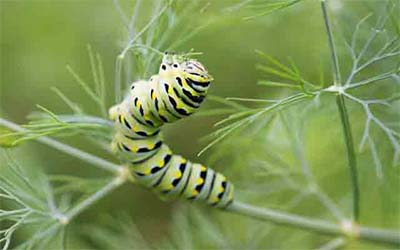
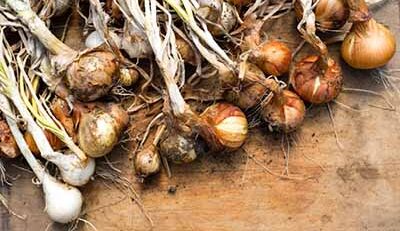
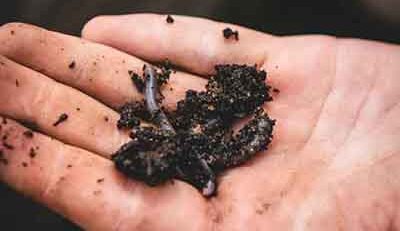

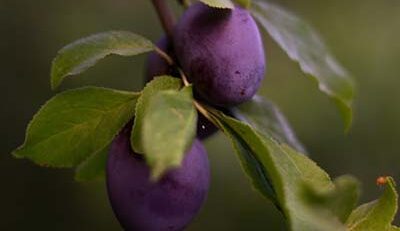
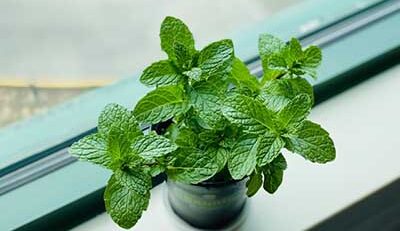


Leave a Reply